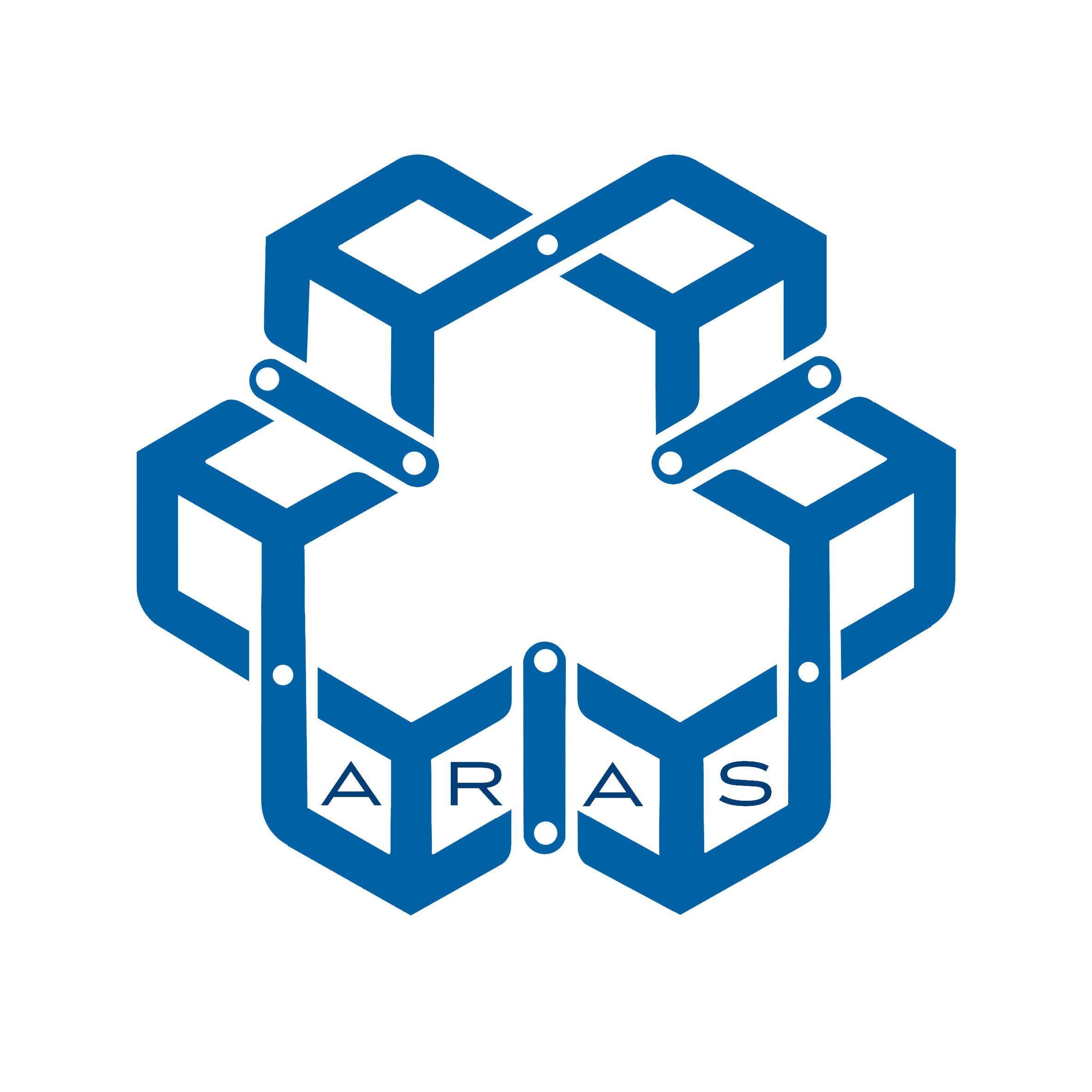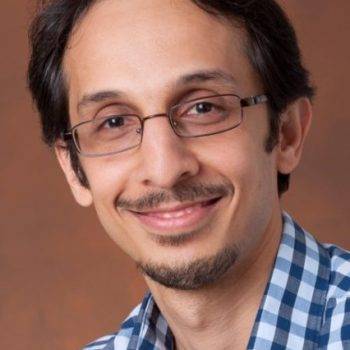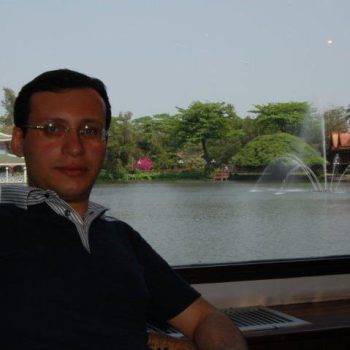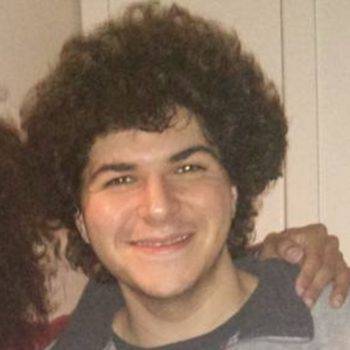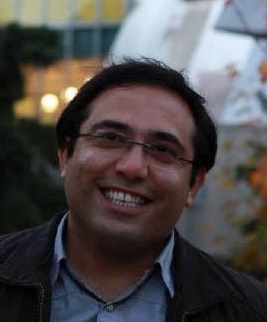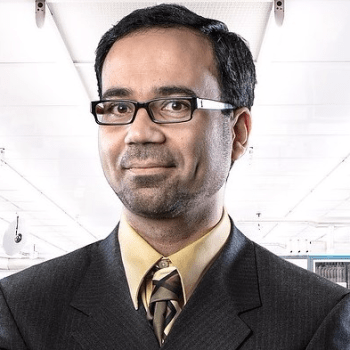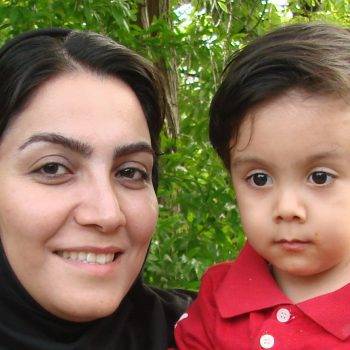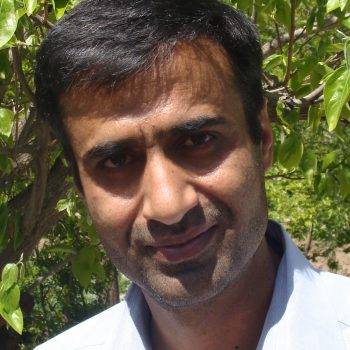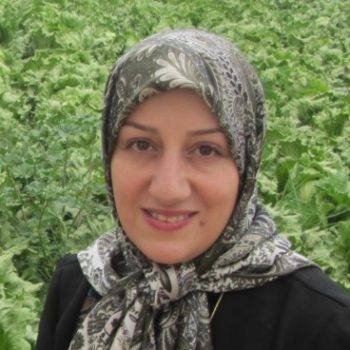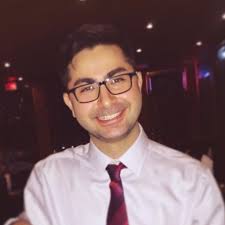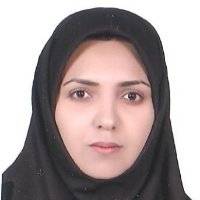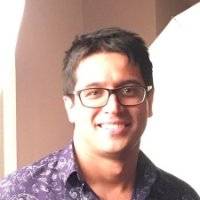Mobile robots have found applications in a wide variety of areas such as search and rescue, remote planet exploration and airborne surveillance. Here, in the Autonomous Robotics (AR) section of ARAS, we study the perception, planning and control of autonomous robots. The mobile robot should be able to efficiently represent its surrounding environment in order to perform any task from exploration of an unknown area to moving toward a predefined goal. The environment perception is represented by either a metric, topological or hybrid map. The main problem of environment representation is the consistency of the constructed map during the navigation and long-term operation of mobile robot in an unknown environment. Various types of sensors are usually employed by mobile robots in order to perceive the surrounding environment. Monocular camera, Microsoft Kinect, Stereo Camera, Laser scanner, LIDAR and Sonar are some common sensors used by mobile robots for map generation and environment perception. Furthermore, the sensor measurements are noisy and the estimation error increases as the mobile robot moves in the environment. In order to overcome the complexity of environment mapping and control of the mobile robot in an unknown environment, probabilistic algorithms are employed to solve the Simultaneous Localization And Mapping (SLAM) problem. One research area that was considered in the AR group, is the SLAM problem. It is assumed that a mobile is traversing in an unknown environment and perceiving observations by a stereo camera or Kinect sensor. Some improvements made to the SLAM algorithm by incorporating the Information Theory. Another major area of research in the AR section is related to the self driving cars. A driver-less car is a mobile robot that observes other vehicles and pedestrians by camera or LIDAR to avoid collision and navigate on the road toward destination
Ali Agha
Robotics Research Technologist at NASA’s Jet Propulsion Laboratory (JPL), California Institute of Technology (Caltech)
Ehsan Mihankhah
Researcher at Nanyang Technological University
Mobile Robotics, Artificial Intelligence, Industrial Automation
Kasra Khosoussi
Laboratory for Information and Decision Systems (LIDS)
Massachusetts Institute of Technology
Amirhossein Tamjidi
Texas A&M University, Aerospace Engineering Department, Graduate Student
Dr. Alireza Norouzzadeh is serving as a freelance researcher here and is also the supervisor of ARAS Autonomous Vehicles Team.
Pouria Mehrabi , Ali NoorMohammadi , Vahid Ajjalluian , Hamid Didari
PH.D.
Alireza Norouzzadeh Ravari, Ramezan Havangi,
Masters:
Nina Marhemati, Farnaz Adib Yaghaei, Hannaneh Soltani, Amir Mobarhani, Mir Alireza Athari, Leila Mehri, Yasser Shahriari Arimi, Ali Noormohammadi Asl, Omid Esrafilian, Ehsan Aboosaeedan, Arash Kalantari, Rana Talaei Shahir, Sadaf Fardad
Bachelors :
Alireza Tajfar, Pouyan Eslami, Omid Esrafilian, Mohammad Farahi, Mohammad Amin Mahmoudzadeh, Mohammad Amin Kashi
The major focus of surgical robotics team is the design and construction of devices to make surgical procedures and surgical training more accurate, effective and less invasive. The current project followed in our team is the design and evaluation of a novel haptic feedback system for facilitating eye surgery training. Undoubtedly, our collaboration with the Farabi Eye Hospital, the Center of Excellence in Ophthalmology, is a valuable and constructive asset for this project. This project involves the design and integration of mechanical and electrical systems and the development of advanced control frameworks for these systems. In addition, the following projects are the most recent projects conducted in our research group:
- Surgery Training Haptic System
- Design and implementation of a cooperative adaptive control structure for ARAS haptic eye surgery training system
- Presentation and implementation of performance evaluation procedure ARAS Haptic System for eye Surgery Training (ARASH: ASiST)
- Design and implementation of impedance control of the dual-user system for eye surgery training
- Eye surgery performance evaluation and improvement using artificial intelligence (AI)
- investigation of the metrics and methods of surgical skill assessment in the Eye Surgery Haptic System
- Deriving Dynamics of the Eye Surgical Robot for Real-Time Control Purposes
- Sliding mode impedance control design for teleoperation systems
Ph.D. student: Mohammad Motaharifar he is the director of the group.
MS.c Students: Reza Heidari, Negar Hojati, Parisa Hasani, Hamed Sadeghi, Mohammad Javad Ahmadi, Ashkan Rashvand
Sara Abkhofte, Pedram Agand, Mohammad Savadzadeh, Rashid Mokhtari, Bita Fallahi, Omid Gerami, Maryam Salimifar, Samim Khosravi, Soheil Gholami, Zahra Marvi, Kamran Taran, Maryam Moafi Madani, Bahareh Sabouri, Ali Alipour, Farbid Farshidian.
Our current main contributors in the group are Prof. Keyvan Hashtrudi-Zaad from Queens University, Ontario, Canada, and Dr. Seyed Farzad Mohammadi, MD, Associate Professor of Ophthalmology,Tehran University of Medical Sciences, Tehran, Iran and Dr. Hamid Riazi, MD, Assistant Professor of Ophthalmology,Tehran University of Medical Sciences, Tehran, Iran and Dr. Alireza Lashayei, MD, Professor of Ophthalmology,Tehran University of Medical Sciences, Tehran, Iran.
ARAS Mixed Reality research group, is aimed to build a simulator of vitrectomy and cataract surgery using virtual reality to provide a completely similar environment for real surgery for eye surgery trainees. The final objective of research in this group will be accomplished with a joint collaboration research with Surgical Robotic (SR) research group of ARAS. This project aims to transfer the actual movement of the surgical tool into the simulator environment. We could add surgical tools to the scene and making a connection between physic of simulation and surgical robot by force feedback. The ARASH: ASiST haptic device will be used in conjunction to the simulator developed in this group to facilitate the procedure of surgery training by involving the expert and novice physicians in the process of training and providing them with suitable haptic feedback.
In addition, the following projects are the most recent projects conducted in our research group:
- Simulator for vitrectomy surgery
- Simulator for Cataract surgery
- Presentation of eye surgery in virtual reality
- Online Surgical Robot Simulator
- Dr Alireza Norouzzadeh
- Golnaz Raja
- Alireza Ghasemi
MSc Students :
Our main international Collaborator in the group is Prof. Mahdi Tavakoli, University of Alberta, Canada and main contributors are Dr. Seyed Farzad Mohammadi, MD, Associate Professor of Ophthalmology,Tehran University of Medical Sciences, Tehran, Iran and Dr. Hamid Riazi, MD, Assistant Professor of Ophthalmology,Tehran University of Medical Sciences, Tehran, Iran and Dr. Alireza Lashayei, MD, Professor of Ophthalmology,Tehran University of Medical Sciences, Tehran, Iran.
Increasing performance demands necessitates design of new types of robots with larger work space, being capable to perform at higher accelerations. In a cable-driven redundant parallel manipulator (CDRPM), the linear actuators of parallel manipulators are replaced with electrical powered cable drivers, which lead immediately to a larger workspace. The idea of using cable driven redundant parallel manipulators, are not limited to only the applications where very large workspace is required, and this idea is effectively penetrated in the applications where precise and stiff robot is required to operate in high accelerations within a relatively larger workspace than that attainable in conventional parallel robots. By ARAS group, several applications in which a CDRPM is used are introduced, and the challenging issues in the optimal kinematics structure, dynamics formulation, and control of such structure are studied. Also, NASIR and ARAS are two kinds of the experimental setups which are implemented by ARAS team.
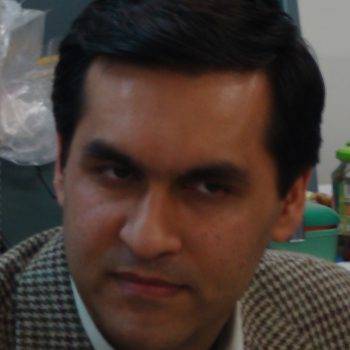
Dr. Hooman Sadjadian
Dr. Azadeh Zarif Loloei
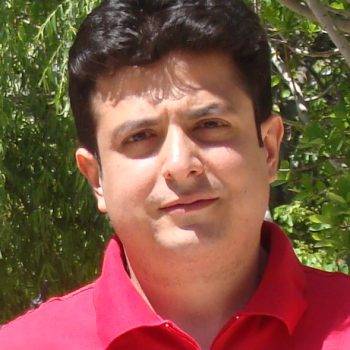
Reza Oftadeh
Dr. Mohammad A. Khosravi
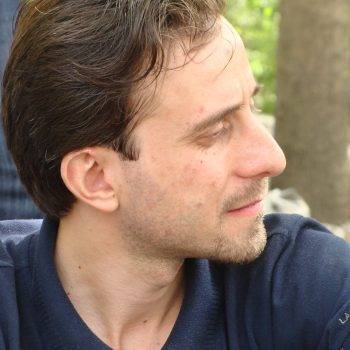
Dr. Yousef Babazadeh Bedoustani
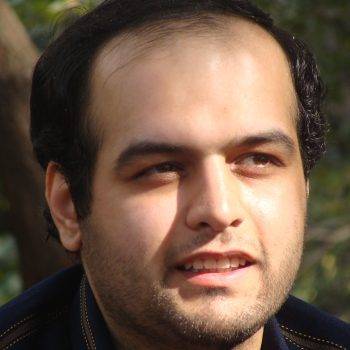
Mohammad Mohammadi Aref
Amin Khorasani and Salman Karimi Nasab is acting as a freelancer in the group.
Phd Candidates: Seyed Ahmad Khalilpour Seyedi he is the director of the group.
MS.c Students: Alireza Bourbor, Ruhollah Khorrambakht
Dr. Hooman Sadjadian, Dr. Mohammad A. Khosravi, Dr. Azadeh Zarif Loloei, Dr. Alaleh vafaei, Dr. Yousef Babazadeh Bedoustani, Mohammad Mohammadi Aref, Reza Oftadeh, Pooneh Gholami, Mohammad Hossein Saadatzi, Leila Ghosi, Hamed Khagehvand, Amin Khorasani, Reza Babaghasabha, Ibrahim Abedloo, Ahmad Sharifi, Kamran Taran, Leila Ghomi, Amir Molaei, Abbas Batalebloo, Soleiman Gholampour, Siavash Fakhimi Derakhshan, Hesam Shoori, Narges Hosseinzadeh, Fereshteh Sabahi, Laghaei, Hamidi, Hayati, Javaheripour, Nina Marhemati, Bita Fallahi, Mobin Saeidi, Hirad Tehranchian.
There are many collaborators with this group. One may mention the following people:
Prof. Meyer A. Nahon, and Prof. Jorge Angeles, McGill University, Montreal, Canada, Prof. Clement Gosselin, and Prof. Philippe Cardou, Laval University, Quebec City, Canada, Dr. Wen-fang Xie, Concordia University, Montreal, Canada, Prof. Ilian Bonev, ETS, Montreal, Canada, Dr. Tobias Bruckman, Duisburg-Essen University, Duisburg, Germany, . . .
Two principal aims confront us. Firstly, to study dynamical systems theory, including methods for analyzing differential equations and iterated mappings, which draws on analysis, geometry, and topology. Secondly, to apply and to tailor aforementioned theories to real systems. The current researches of this group may be listed in the four categories:
- The research about finding an algorithm method for analysis of equilibrium point of quasi-homogeneous systems as an important part of autonomous systems, related to Hilbert’s 16th problem and Arnold’s question, associated with the indirect method of Lyapunov,
- To design robust controllers based on linear and nonlinear H_infinity methods for industrial systems such as a half-car active suspension system, RTAC (TORA), flexible joint robots, surgical robots etc.
- To develop and tailor the techniques of state-dependent Riccati equation (SDRE) filtering so as to rigorously estimate states and parameters of the nonlinear systems with uncertainty, exposed to unknown disturbance inputs, and also to apply SDRE filter to stochastic systems and real applications,
- To study Neuroscience as a multidisciplinary field, which we believe it will be significantly influenced by dynamical systems theory. We are currently engaged in the research about modeling of the neurons, especially located at V1, and optic nerves and also investigating methods for stimulation and recording of the nerve cells, including noninvasive and invasive methods, such as Steady State Visually Evoked Potential (SSVEP) stimulation, Transcranial Magnetic Stimulation (TMS), microelectrode stimulation, Optogenetics stimulation, Electroencephalogram (EEG) recording, Electrocorticography (ECoG) recording, Local Field Potential (LPF) recoding, and Spikes recording.
Hossein Beikzadeh
Arsalan Rahimabadi is serving as a freelance researcher here and is also the supervisor of ARAS Dynamic Systems Analysis and Control Team.
Samaneh Kaviri Bidgoli, Mohammad Hossein Salehpour Shahreza, Faraz Lotfi
Shaham Afshar, Mehdi Khalkhali, Mehdi Noori, Ehsan Nouhi, Mohammad Reza Eskandari, Azad Ghaffari, Saeid Mahyad, Saeed Barghandan, Seyed Ali Salamati, Amir Haddadi, Shirin Dadashi, Hadi Hagi Eghrari, Kian Dorr, Mohammad Mahdi Sarepasand, Mehdi Ataollahi, Mohammad Ali Ansari, Saeed Shakib, Mojgan Rostami, Fatemeh Mahdavi Golmisheh, Iman Safari, Fatemeh Akrami,
We have many academic and industrial collaborators in this group, among them, one may mention:
Dr. Hadi Moradi University of Tehran, . . .
Three main aspects of vehicle dynamics are notable in this Research theme: handling, roadholding and stability. Handling, means the ease, style and feel with which the motorcycle does our bidding. Roadholding is the ability of the vehicle, through its tyres, to maintain contact with the road. Stability implies the ability to maintain the intended maneuver without an inherent tendency to deviate from our chosen path. Handling, roadholding and stability are affected by many parameters and the interaction between them. Their requirements are contradictory and there shall be a compromise among them. In our research mathematical analysis of motorcycle dynamics is used to speculate how handling, roadholding and stability are related to the system parameters and variables. Using this insight, a handling index is introduced to be applied to the problem of optimal handling, where roadholding and stability should be pertained to an acceptable level. The nonlinear constrained optimal problem is solved online to give the algorithm of drive/break on each wheel. Electric drive enables the implementation of the algorithm on a real vehicle.
Saeedeh Ziapour, Amir Hossein Safari, Amir Hossein Samii
This Research Theme is embarked from an industrial contract with a private company. Research and development of this Electrical motorcycle manufacturing company is handled with our research group.
